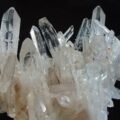Killer whales are spending more time in the newly melted portions of the Arctic Ocean. Considered by researchers to be an attempt to expand their hunting grounds, the whales are doing so despite the increased risk of being trapped by the re-freezing of water into ice.
BACKGROUND: ARCTIC SEA AND CLIMATE CHANGE
Due to climate change, a significant portion of the previously frozen Arctic Ocean has begun to melt. Although nearly all scientists attribute this change to human activity, the result has a significant effect on animals as well.
Now, a group of researchers is trying to understand this change, and how it has affected the predation habits of killer whales who often inhabit this same area.
ANALYSIS: KILLER WHALES FOLLOWING THEIR PREY
Presented at the 181st meeting of the Acoustical Society of America, and titled “Tracking killer whale movements in the Alaskan Arctic relative to a loss of sea ice,” researcher Brynn Kimber from the University of Washington discussed how killer whales are spending more time in the Arctic Ocean than ever before, and that this change has correlated with the decrease of sea ice.
“It’s not necessarily that killer whales haven’t been reported in these areas before,” explained Kimber in a press release announcing the session, “but that they appear to be remaining in the area for longer periods of time.”
This change in behavior, adds Kimber, “is likely in response to a longer open water season.”
To reach this conclusion, Kimber and their research team looked at eight years of acoustical data used to track whales and other sea life. This analysis allowed them to monitor the movements of the migrating killer whales using acoustic analysis tools, leading to the latest finding.
OUTLOOK: ECOLOGICAL IMBALANCE?
If their analysis is correct, the researchers believe this new behavior is likely an attempt by the whales to follow prey into new hunting grounds.
“The reduction in sea ice may have opened new hunting opportunities for killer whales if certain species of prey are unable to use the ice to avoid the highly adaptive predator” the release explains. “For example, the endangered bowhead whale is vulnerable to predation by killer whales, likely to increase due to longer open water seasons.”
This circumstance, they note, is not necessarily good or bad, but still may lead to unforeseen consequences.
“Continuous reduction in sea ice in the Arctic Ocean is opening areas to increased killer whale dwelling and predation,” the press release explains, “potentially creating an ecological imbalance.”
Either way, I think we’re gonna need a bigger boat.
Follow and connect with author Christopher Plain on Twitter: @plain_fiction
